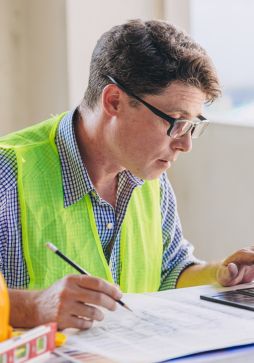The construction industry faces a myriad of regulatory challenges that can significantly impact product manufacturing. Understanding and adhering to regulations is crucial for ensuring compliance, avoiding costly penalties, and maintaining a competitive edge. According to Construction Owners, manufacturers must stay updated on various regulatory standards to thrive in a constantly evolving market. Additionally, companies can leverage tools like Building Radar to identify regulatory requirements relevant to their projects, ensuring they meet compliance standards efficiently.
The regulatory landscape in construction is complex, often involving multiple layers of government oversight, industry standards, and environmental regulations. As manufacturers navigate these challenges, they must develop strategies to streamline compliance processes and mitigate risks. This article explores practical solutions for overcoming regulatory hurdles, highlighting the role of technology and data-driven insights in achieving compliance.
Understanding Regulatory Frameworks in Construction
1. Key Regulatory Standards
Regulatory standards in construction vary widely across different regions and sectors. These may include safety regulations, environmental protection laws, and product performance standards. Understanding these regulations is critical for manufacturers aiming to produce compliant products. The SAGE Journals highlight the significance of complying with both local and national regulations, as failure to do so can lead to legal complications and project delays.
Building Radar provides manufacturers with insights into upcoming regulations and compliance deadlines, helping them stay ahead of the curve. By utilizing AI technology to track regulatory changes, construction product manufacturers can ensure that their products meet the latest industry standards.
2. The Importance of Compliance
Compliance is not merely a legal obligation; it can also enhance a company’s reputation and marketability. Manufacturers that prioritize regulatory compliance often experience increased trust from clients and stakeholders, leading to more business opportunities. As noted by LetsBuild, maintaining compliance can also reduce the risk of costly fines and project delays, ensuring smoother operations.
With Building Radar, companies can efficiently manage compliance-related tasks by using streamlined checklists and mobile-friendly tools. This allows teams to focus on product innovation while ensuring that regulatory obligations are met without hindering productivity.
Strategies for Navigating Regulatory Challenges
1. Develop a Compliance Management System
Creating a robust compliance management system is essential for managing regulatory requirements effectively. This system should include processes for tracking regulations, documenting compliance efforts, and regularly reviewing policies. Gocious emphasizes that a proactive approach to compliance can significantly reduce risks and improve overall project efficiency.
Building Radar assists manufacturers in developing compliance strategies by providing access to a centralized database of regulations. This comprehensive information enables companies to manage their compliance efforts effectively, ensuring they remain competitive in the marketplace.
2. Invest in Training and Education
Ongoing training and education for employees are vital for fostering a culture of compliance within the organization. Manufacturers should invest in regular training sessions that keep staff informed about regulatory changes and compliance best practices. As highlighted in the JWC Sitework article, equipping employees with knowledge empowers them to identify compliance issues early, reducing the likelihood of costly mistakes.
Building Radar supports training initiatives by offering resources and templates that can be integrated into educational programs. This ensures that all team members are well-versed in the necessary compliance measures related to product manufacturing.
3. Foster Collaboration with Regulatory Bodies
Establishing a collaborative relationship with regulatory agencies can be beneficial for manufacturers. Engaging with these organizations can provide valuable insights into regulatory expectations and future developments. LetsBuild suggests that open communication with regulators can help manufacturers anticipate changes and adapt their processes accordingly.
Building Radar facilitates these collaborations by offering data on regulatory trends and project requirements. This information allows manufacturers to engage proactively with regulatory bodies and align their product strategies with compliance expectations.
4. Embrace Technology for Compliance Tracking
Utilizing technology to track regulatory compliance can significantly enhance efficiency. Software solutions that automate compliance tracking help manufacturers stay organized and informed about regulatory changes. As mentioned in Construction Owners, digital tools can streamline compliance processes, reducing the burden on teams and ensuring that no critical requirements are overlooked.
Building Radar’s advanced software capabilities provide manufacturers with tools to monitor compliance effectively. By integrating compliance tracking into their existing systems, companies can streamline their operations and minimize risks associated with regulatory challenges.
5. Continuous Improvement and Adaptation
Regulatory environments are constantly evolving, and manufacturers must adopt a mindset of continuous improvement. Regularly reviewing compliance processes and adapting to new regulations can help companies remain resilient in the face of challenges. As noted in Gocious, fostering a culture of adaptability ensures that manufacturers are better equipped to handle changes in the regulatory landscape.
Building Radar supports this continuous improvement approach by providing ongoing insights into market trends and regulatory changes. This allows manufacturers to make informed decisions and adjust their product strategies to maintain compliance and competitive advantage.
Conclusion
Navigating regulatory challenges in construction product manufacturing is essential for ensuring compliance and maintaining a competitive edge. By developing robust compliance management systems, investing in employee training, and embracing technology, manufacturers can effectively mitigate risks associated with regulatory requirements. Building Radar plays a crucial role in this process by providing valuable insights and tools that streamline compliance efforts. As the regulatory landscape continues to evolve, manufacturers who leverage technology and proactive strategies will be best positioned to thrive in the construction industry.









